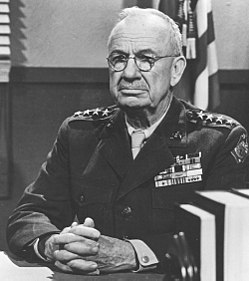This article includes a list of general references, but it lacks sufficient corresponding inline citations .(February 2022) |
On February 19, 1945, men of the United States Marine Corps invaded the island of Iwo Jima, part of the Volcano Islands chain, in the North Pacific. This invasion, known as Operation Detachment , was a phase of the Pacific Theatre of World War II. The American goal was to establish multiple airfields that would allow escort fighters to accompany long-range bombers in their attacks on the Japanese home islands, as well as providing a place for damaged bombers to land on the return flight.
Contents
The Japanese military was determined to inflict a casualty rate so high that the U.S. government would give up its demand that Japan surrender unconditionally. To this end, the island had been covered with an extremely extensive system of fortifications and fields of fire. The United States Navy subjected the island to an unprecedented bombardment and, according to historian Samuel Eliot Morison, "In no previous operation in the Pacific had naval gunfire support been so effective as at Iwo Jima." [1] Nonetheless, Japanese artillery and machine-gun fire were extremely effective because the underground bunkers were so strong, only a direct hit by a bomb or naval shell could knock one out. Since direct hits were very difficult on well-camouflaged bunkers, many survived and inflicted a huge casualty rate on the Marines.
For the conquest of Iwo Jima, the Marine Corps assigned three divisions, a total of almost 70,000 troops, in stark contrast to the single division tasked with capturing Guadalcanal in August 1942. The conquest of Iwo Jima took five weeks, far beyond the American estimates.
























